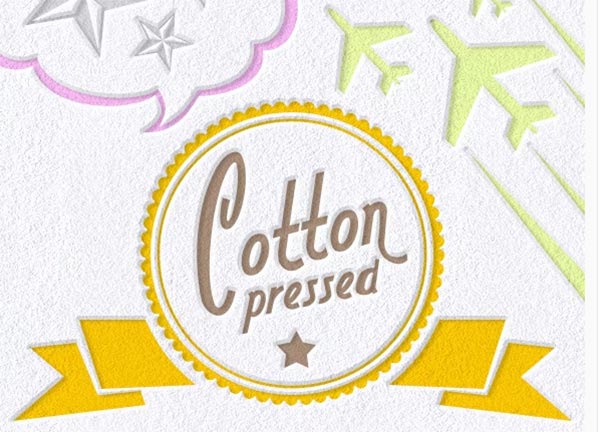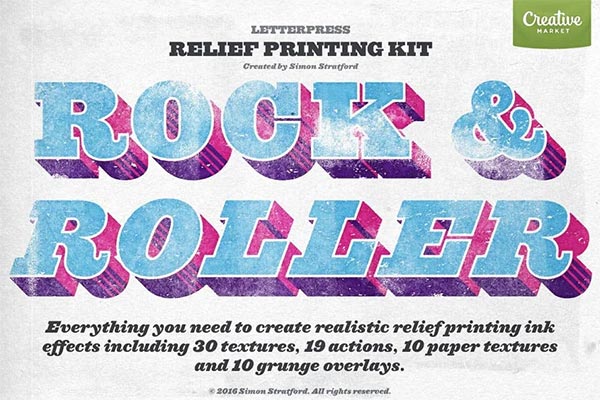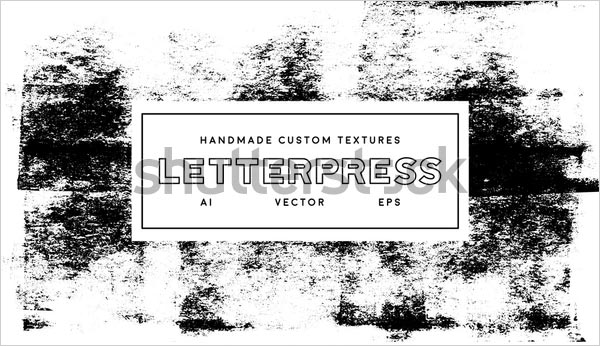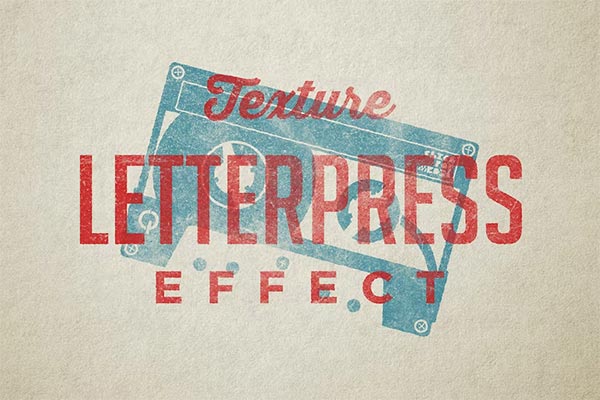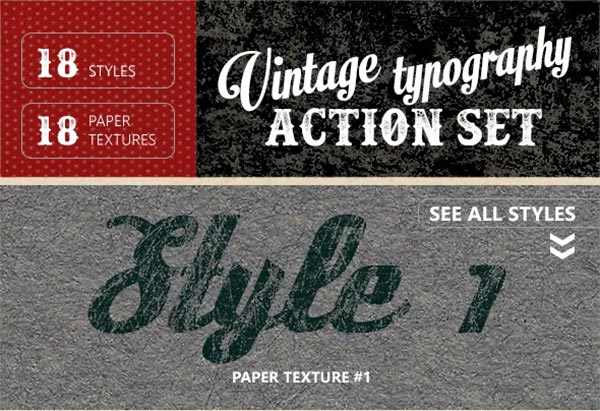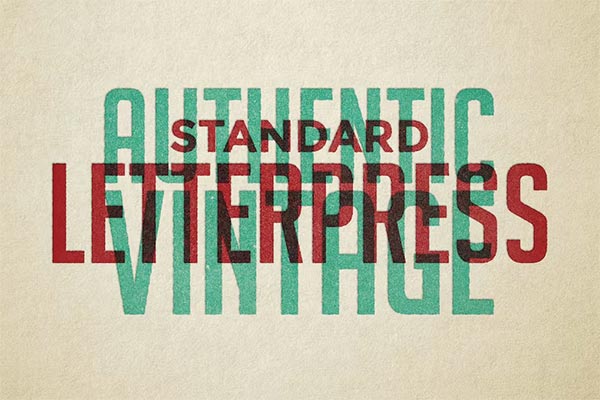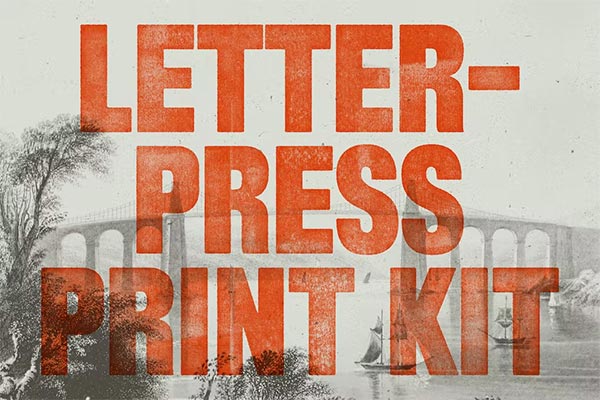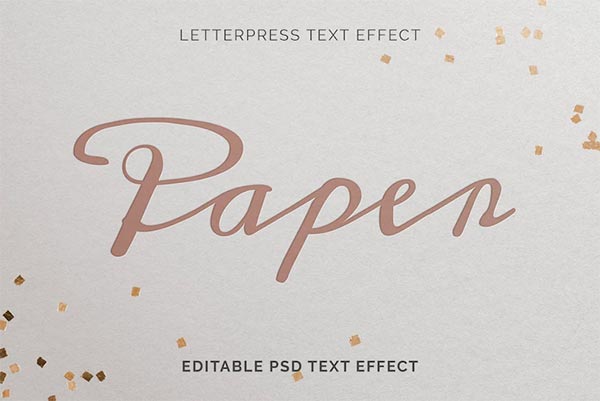Letterpress Textures Pattern Templates: Crafting Timeless Designs with Vintage Elegance
In the digital age, where sleek and modern designs dominate, the allure of letterpress textures offers a refreshing throwback to an era of craftsmanship and tactile beauty. Letterpress texture pattern templates are a designer's secret weapon for adding depth, sophistication, and a touch of nostalgia to any project. These templates allow you to recreate the classic, embossed feel of letterpress printing while saving time and effort.
In this guide, we’ll dive deep into the world of letterpress textures, exploring how you can use these pattern templates to bring your design projects to life. From business cards and wedding invitations to website backgrounds and product packaging, the applications for letterpress textures are as versatile as they are visually stunning.
What Are Letterpress Texture Pattern Templates?
Letterpress textures mimic the look and feel of traditional letterpress printing, where letters and designs are pressed into thick paper, creating a tactile impression. In the digital realm, letterpress texture pattern templates give you the same beautiful effect without the need for physical presses or custom printing. These templates come in digital formats and can be used in design software like Adobe Photoshop, Illustrator, and others to add an authentic letterpress feel to your work.
The beauty of these templates lies in their ability to blend vintage aesthetics with modern technology. Designers can achieve an old-world charm with a few clicks, making it perfect for projects that require a touch of elegance or handcrafted appeal.
Why Use Letterpress Texture Pattern Templates?
There are several compelling reasons to use letterpress texture pattern templates in your design work:
Adds Depth and Texture: Flat designs can sometimes feel impersonal or uninspiring. Letterpress textures bring a level of sophistication by adding dimensionality to your text and graphics, making your designs stand out.
Vintage Appeal: In a world of polished, ultra-modern design, the vintage charm of letterpress textures offers a warm and human touch. It evokes a sense of history, craftsmanship, and authenticity that resonates with audiences seeking something timeless.
Versatility: Letterpress texture templates work across a range of design projects. From branding materials like logos and business cards to invitations, posters, and even website headers, this style lends itself to a variety of applications.
Professional Quality Without the Cost: Hiring a letterpress printer or purchasing physical letterpress equipment can be expensive. Digital letterpress templates offer the same professional quality at a fraction of the cost, all while giving you complete creative control.
Customizable and Easy to Use: These templates are highly customizable, allowing you to adjust the textures, colors, and intensity to fit your project. Whether you want a light, subtle impression or a bold, deeply pressed look, you can tailor it to your specific design needs. Denim Texture Pattern Templates
Applications of Letterpress Texture Pattern Templates
Letterpress textures aren't just for traditional print designs. With the rise of digital design, these textures can be used in a wide variety of contexts. Below are just a few creative ways to incorporate letterpress textures into your work:
Business Cards: Letterpress textures are perfect for creating standout business cards that leave a lasting impression. The textured feel adds a level of sophistication and professionalism that instantly elevates the quality of your brand. By using a letterpress texture template, you can simulate the look of premium, embossed business cards without the high production costs.
Wedding Invitations: For wedding invitations, the soft, pressed look of letterpress textures exudes elegance and romance. These templates allow you to create stunning invitations that look like they were printed on luxurious cardstock with intricate detailing. Paired with a calligraphy-style font, letterpress textures make wedding stationery feel extra special.
Branding and Logos: Brands that want to convey a sense of history or craftsmanship often turn to letterpress textures in their logos and branding materials. The slight embossing effect gives logos a more tactile, handcrafted feel, perfect for artisanal or luxury brands. From bakery logos to boutique hotel branding, letterpress texture templates help communicate quality and attention to detail.
Posters and Flyers: In advertising, it’s important to stand out. Letterpress texture pattern templates can be used on posters and flyers to give your event, product, or promotion a distinctive vintage aesthetic. The texture draws the eye, adding a layer of complexity that keeps viewers engaged.
Web Design: Though typically associated with print, letterpress textures have also made their way into web design. Used as background patterns or incorporated into headers, these textures give websites a warm, approachable look. For brands that want to combine modern digital presence with classic design elements, letterpress textures strike the perfect balance.
Product Packaging: If you’re designing product packaging, especially for high-end or handcrafted goods, letterpress textures can give your product an air of exclusivity. From wine labels to soap boxes, the subtle use of embossed textures can elevate your packaging design, making it feel more premium and bespoke. Canvas Texture Pattern Template
How to Use Letterpress Texture Pattern Templates
Using letterpress texture pattern templates in your design projects is simple, especially if you’re familiar with design software like Photoshop or Illustrator. Here’s a quick guide on how to make the most of these templates:
Download and Install the Template: Start by downloading a letterpress texture template from a trusted source. These templates often come in formats like PSD, AI, or PNG. Once downloaded, load the file into your design software.
Select the Area to Apply the Texture: Identify the part of your design where you want to apply the letterpress texture—this could be text, logos, or an entire background. If you're using Photoshop, place the texture layer over your design layer and set the blending mode to "multiply" or "overlay" to create the letterpress effect.
Customize the Texture: Adjust the opacity, intensity, and scale of the texture to suit your project. Many templates also allow you to change the color, giving you flexibility to match the letterpress texture with your design's color scheme.
Refine the Look: Once the letterpress effect is applied, fine-tune the details. Make sure the texture doesn’t overpower your design but rather complements it. This can be done by subtly adjusting the texture’s sharpness or using layer masks to focus the effect on specific areas.
Final Adjustments: Finally, step back and review the overall composition. Does the texture enhance the design? Are the embossed areas clear and impactful without being overwhelming? Once you're happy with the look, your project is ready to print or export digitally.
Where to Find High-Quality Letterpress Texture Pattern Templates
To get started with letterpress textures, you’ll need to find high-quality templates. Here are some of the best resources for finding top-notch letterpress texture pattern templates:
Envato Elements: A subscription-based service that offers thousands of design assets, including letterpress textures, fonts, and mockups. Their selection is curated by professional designers and is perfect for high-end projects.
Creative Market: An online marketplace for independent designers, Creative Market offers a wide variety of letterpress textures and pattern templates. You can browse through individual items or buy design bundles at a discounted rate.
DesignCuts: Known for their high-quality design resources, DesignCuts provides a range of letterpress textures that can be used across various projects. They often offer bundles that include fonts, textures, and templates, giving you more design options for your money.
Freepik: For those looking for free resources, Freepik offers a decent selection of letterpress texture templates. While the quality can vary, it's a great place to start if you're working with a tight budget.
To ensure your designs look as polished and professional as possible, keep these tips in mind when using letterpress textures:
Pair with Classic Fonts: Letterpress textures work beautifully with serif fonts or script fonts that mimic traditional print styles. Avoid overly modern, sans-serif fonts as they can clash with the vintage feel.
Keep it Subtle: The beauty of letterpress lies in its subtlety. Avoid overusing the texture—focus on a few key elements in your design, like headlines or logos, to maintain a balanced look.
Use High-Resolution Textures: Always choose high-resolution templates, especially if you plan on printing your design. Low-res textures can look pixelated and unprofessional.
Conclusion
Letterpress texture pattern templates offer designers the opportunity to blend vintage charm with modern functionality. Whether you’re crafting business cards, wedding invitations, or even digital designs, the depth and elegance of letterpress textures bring a timeless quality to your work. With a wide range of templates available, you can easily incorporate this classic aesthetic into your projects, creating designs that feel both personal and professional.
